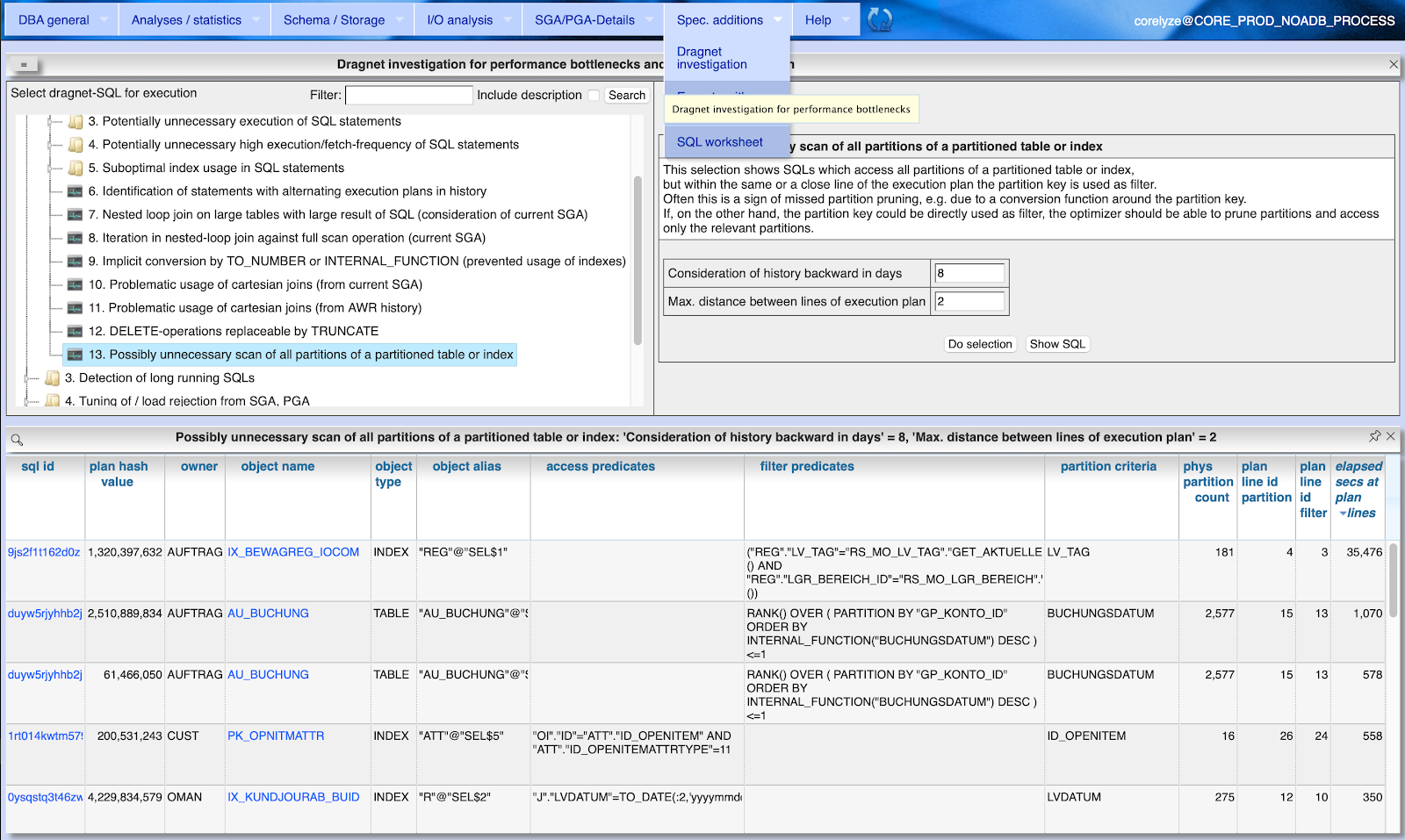Oracle-DB: Find SQLs that are missing partition pruning even if it could be possibly used

Some times a SQL execution includes all partitions of a partitioned table or index into processing, although there are filter conditions used that contain also the partition key of that partitoned table or index. There are several possible reasons why the optimizer does not recognize that access could be reduced to one or less partitions (a.k.a. partition pruning): The partition key can be obfuscated behind a conversion function The partition key can be compared to a function result that is known only at execution time Being able to use partition pruning can make a huge difference for execution time of the SQL. Imagine you only need to scan one partition of a table instead of several thousands. Often only a small change in the SQL statement can drive the optimizer to use partition pruning. A small example where all partitions are scanned due to comparison of the partition key with a function result: Get the sum of order value for a table interval partitioned by day. SELE...
